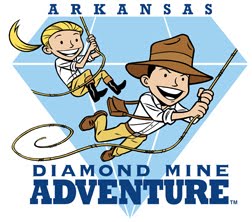Today I (David) am going to deviate from our normal topic--updates on our progress in establishing our business dream and tips for entrepreneurs--to offer a review of two books I've read recently. This seems like the right time with the presidential election just weeks away.
This past summer while we were in Bali, my father-in-law gave me Barack Obama's book Dreams from My Father to read. This past week I was invited to read Chick-fil-A founder Truett Cathy's book Eat Mor Chikin Inspire More People. Reading the books back to back provided a striking contrast in the two leaders.
I want to spotlight just a few of the many differences between President Obama's background and philosophy and Mr. Cathy's. The first difference that stands out comes from Obama's introduction (pg xiii), where he writes that he was elected the first black president of the Harvard Law Review, which led to several publishers calling him to see if he would write a book. He agreed to take off a year after graduating to write the book, and this is how he started.
"In that last year of law school, I began to organize in my mind, with a frightening confidence, just how the book would proceed." Two paragraphs later he continues, "I'm 33 now; I work as a lawyer active in the social and political life of Chicago. If I've been able to fight off cynicism, I nevertheless like to think of myself as wise to the world, careful not to expect too much."
It seems a little arrogant to me for a 33-year-old man to say that he had a frightening confidence in his abilities and thought of himself as wise to the world.
In contrast, Cathy, who was 80 and still steering his $1.25 billion company to greater heights when he wrote his book, never makes such boasts. Rather, he says he has a simple confidence in God's plan for his life. If he brags about anything, it's that he has worked hard and has three children, 12 grandchildren and more than 120 foster children.
Obama’s book is a tedious, dark journey that covers his search for himself, his racial identity and his place in the white man’s world. In high school, he played basketball and was part of the pot-smoking gang. In his book Obama freely admits:
"I had learned not to care. ... Pot had helped, and booze; maybe a little blow (cocaine) when you could afford it. ... Junkie. Pothead. That's where I'd been headed: the final, fatal role of the young would-be black man. Except the highs hadn't been about that, me trying to prove what a down brother I was. ... And if the high didn't solve whatever it was that was getting you down, it could at least help you laugh at the world's ongoing folly and see through all the hypocrisy and bull$&#% and cheap moralism" (pg 93).
In contrast, Cathy's bright and uplifting book is all about his quest to serve others. "The history of Chick-fil-A, in fact, is a series of unexpected opportunities. When we responded to them, we often found ourselves richly blessed," he writes. "I enjoy few things more than making people--especially children--smile."
One thing Obama and Cathy have in common is mothers who loved them and taught them values. Midway through his book, Obama writes that in Indonesia his mother woke him at 4 a.m. five days a week and taught him English lessons for three hours before he went to school and she went to work. She taught him the values of honesty, fairness and straight talk. His mother possessed "a faith that rational, thoughtful people could shape their own destiny. ... She was a lonely witness for secular humanism, a soldier for New Deal, Peace Corps, position paper liberalism" (pg 50).
By page nine of his book, Cathy has already discussed opportunities parents have to teach their children such values as hard work, fairness, honesty and respect. Because his mother had to prepare dinner for their boarders, she couldn't go to church, "but she saw that we children got dressed and off to Sunday school and church."
Obama goes on and on about his struggles as a child. In his defense, he did suffer because his father left him (at age 2) and his mom and returned to his native Kenya. He never mentions--that I recall--ever working to help his mom or his grandparents pay the bills, or doing anything responsible to help others.
Cathy also discusses his childhood and his family's financial struggles during the Great Depression. His mother ran a boarding house in their rented home and cooked breakfast and dinner for her seven children and for the seven or eight boarders seven days a week. Cathy, unlike Obama, spent many days alongside her shucking corn, shelling peas, setting the table and washing dirty dishes. His mother worked hard, he says, adding he never saw her eyes closed until she lay in her casket.
Cathy was eight years old when he decided it was time for him "to earn my own money," so he started selling Coca Colas door to door. A short time later he built a Coke stand in his front yard. In the winter of that year he started selling magazine subscriptions door to door and helped a friend with his newspaper route. When he turned 12 Cathy says he began to contribute to the family when he got his own paper route.
"Nearly every moment of every day we have the opportunity to give something to someone else--our time, our love, or our resources. I have always found more joy in giving when I did not expect anything in return," Cathy writes.
"That's why I'm so thankful that the Lord brought foster children into my life. ... Unexpected opportunities almost always carry with them the chance to be a faithful steward and to influence others positively. These were the lessons I began to learn in childhood from my mother, my siblings, and others around me who cared enough to teach me."
Readers cannot determine from Obama's book if he ever developed a faith in God that went beyond believing that "rational, thoughtful people could shape their own destiny" and that God and church were things to be used to rally people to get justice through social activism. He did eventually attend Rev. Jeremiah Wright's Trinity United Church of Christ with its "black liberation theology" (pg 282).
Cathy's faith in Jesus Christ is evident on almost every page of his book. He writes that when he prays, he tries to pray honestly "from the heart, not just with words but with thoughts seeking God's guidance and direction, committing myself to do what I should do and to change what I should change. We need to trust the Lord," he says. "We all need God in our lives" (pg 66).
The major difference between Obama and Cathy is their worldviews. Obama's book reminds me of a verse in the Bible that says people "are always learning and never able to arrive at a knowledge of the truth" (2 Timothy 3:7). I don't know if Cathy is as smart as Obama, but it's obvious from Eat Mor Chikin Inspire More People that at least he knows the truth.


















